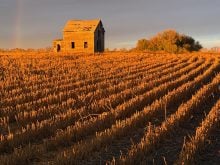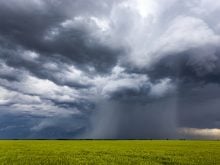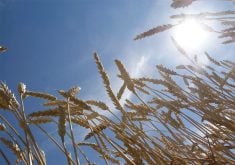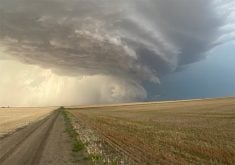Let’s take a look at two signs of a warming world: the shrinking arctic sea ice and the lengthening frost-free period on the Prairies.
I find it interesting that if arctic sea ice levels are not breaking records, it no longer seems to make it into the headlines.
This year’s arctic sea ice minimum was reached on Sept. 12 and was around 4.38 million sq. kilometres. This was the sixth lowest reading in the 46-year satellite record. To put that into perspective, every year since 2014 has been one of the 10 lowest years, much like global temperatures.
Read Also

Saskatchewan puts crown land auction on hold
Auctions of Saskatchewan crown lease land are once again on hold.
In the 1980s, arctic sea ice minimums averaged between 6.5 and 7.5 million sq. km. Around 2000, they were in the 5.5 to six million sq. km range. Compare those numbers to the 2020s, which have been averaging in the four to five million range, and you can see how significant the drop in summer ice coverage has been.
As of Oct. 1, the Northwest Passage deep water route had an all-time record low ice level, breaking the previous record set in 2011.
Also of interest is the age of the ice. In the 1980s, there were about four million sq. km of multi-year ice and about two million sq. km of ice older than four years. Today, there are about 1.5 million sq. km of multi-year ice and only about 120,000 sq. km of ice older than four.
As the National Snow and Ice Data Center put it, ”the Arctic Ocean has lost 95 per cent of its oldest and thickest ice.” This is important because young thin ice melts more easily than thick old ice.
Now to our look at frost — fall frosts, spring frosts, and the length of the frost-free season. In the 1980s, my climate thesis in university was titled: Changes in the Length of the Frost-Free Season Across Southern Manitoba. I still have an interest in this topic.
For this discussion, I will look at data that shows the average date of the last spring frost (LSF), the first fall frost (FFF) and average length of the frost free season (FFS).
A couple things stand out. First, all locations had a longer than average frost-free season, and in some cases much longer. Second, there is one location that really jumps out, and that is Calgary, which on average has a frost-free season of 119 days. This year Calgary saw the frost-free season stretch to 153 days, a full month longer than average (34 days).
Edmonton, at 28 days longer than average, had the next biggest difference between the average frost-free season and this year. The two other stations with very long frost-free seasons were Winnipeg and Brandon, both at 143 days compared to the average of 122 days, or 21 days longer.
Looking back at my thesis data, I am only able to compare frost data with the three Manitoba stations. In my thesis, I looked at decadal trends in length of the frost-free season, with data sets ranging from the 1870s for Winnipeg, 1890s for Brandon and 1900s for Dauphin.
Winnipeg’s frost-free season in the 1880s was about 105 days, but by the 1920s and 1930s it had risen to 117 days. Then it fell back to around 112 days in the 1940s. Since then, there has been a mostly slow and steady rise in average length of the frost-free season to the current value of 122 days.
Brandon has seen a much greater increase in the frost-free season. In the 1890s, the average was 91 days. With a few ups and downs over the next 130 years, the overall trend has been a steady increase to the current value of 122 days.
Daniel Bezte is a teacher by profession with a BA in geography, specializing in climatology, from the University of Winnipeg. He operates a computerized weather station near Birds Hill Park, Man. Contact him at dmgbezte@gmail.com.


















